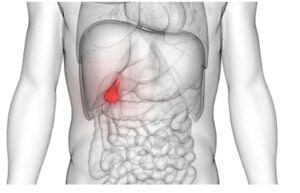
Reading Time: 2 minutes
Gallbladder: Location, Function & Role for Good Health. The unsung hero of digestion, the gallbladder, plays a vital role in breaking down fats in your body. Often overshadowed by its larger neighbor, the liver, understanding the gallbladder: location, function & role for good health is essential for maintaining a healthy digestive system.
Gallbladder: Location, Function & Role for Good Health – Unveiling the Mystery

The gallbladder is a pear-shaped organ situated conveniently under the liver in your upper right abdomen. This strategic positioning allows it to work closely with the liver, which produces bile, a digestive juice crucial for fat breakdown. The gallbladder acts as a storage tank for this bile until it’s called upon to aid digestion.
Look at Gallbladder Anatomy
While small in size, typically measuring 3-4 inches long and 1 inch wide, the gallbladder is a powerhouse when it comes to bile storage and release. Let’s explore its key anatomical features:
- Fundus: The rounded bottom portion, often referred to as the “head” of the gallbladder.
- Body: The middle section, making up the bulk of the organ.
- Neck: The narrowest part, connecting the gallbladder to the bile duct system.
- Bile Duct: A tube that carries bile from the liver and gallbladder to the small intestine.
The gallbladder’s muscular walls contract and relax, releasing bile when necessary. A network of blood vessels nourishes the organ, while nerves coordinate its contractions.
The Gallbladder’s Essential Function: Bile Storage and Release

The primary function of the gallbladder revolves around storing and concentrating bile produced by the liver. Bile, a yellowish-green fluid, is composed of cholesterol, bile salts, phospholipids, and bilirubin (a waste product from red blood cell breakdown). Bile plays a critical role in fat digestion by:
Fat Emulsification:
- Bile salts act like detergents, breaking down large fat molecules into smaller particles. This allows digestive enzymes to work more efficiently, extracting nutrients from fats.
Vitamin Absorption:
- Certain fat-soluble vitamins, like vitamins A, D, E, and K, require bile salts for proper absorption in the intestine.
Understanding the Release Mechanism
When you consume a fatty meal, your body triggers the release of hormones like cholecystokinin (CCK).
CCK stimulates the gallbladder to contract, forcing stored bile into the bile duct. The bile then travels down the small intestine, aiding in fat digestion and nutrient absorption.
Listen to Your Body:
If you experience persistent upper right abdominal pain, especially after eating fatty foods, nausea, vomiting, or fever, consult your doctor to rule out gallbladder problems and get the appropriate treatment.
